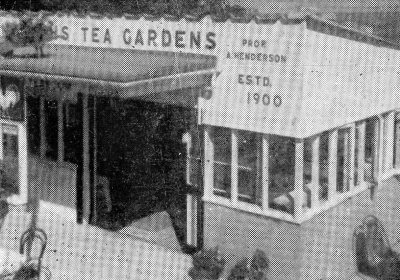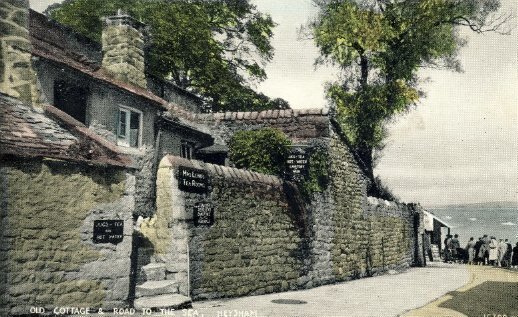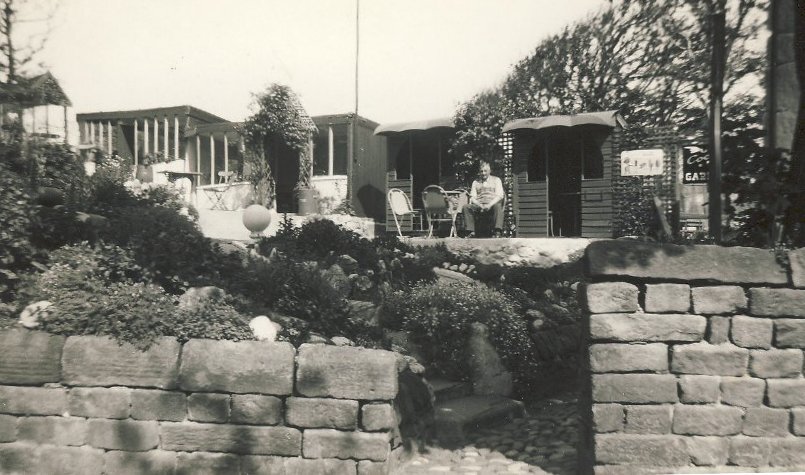The building which now comprises 1, 3 and 5 Main Street is a grade 2 listed building dating from the 17th century. One explanation for the term Greese is from the Latin gradus for steps.
David Flaxington in the History of Heysham states that Greese Cottage was built by a John Clarkson during the period when William Ward was rector, 1636 -1670. William Ward is buried in the chancel at St Peter’s.
The Victoria History contains a footnote to the effect that the rector William Bushell from 1698-1735 also built a rectory-house, a phrase which suggests that rectory once had a wider meaning than just a dwelling, in the same way as there is a distinction between manor and manor-house. Bushell’s rectory is thought to be the first stone built rectory on the present site to the south of the church.
A small section of the 1838 Heysham Tithe Map with some renumbering for clarity
During the first half of the 19th century the Tithe Map of Heysham demonstrates that there were other buildings between Greese Cottage (424) and the Church (388) (numbers refer to the Tithe Map section above). The right hand of the three rectory buildings (389) was the stables and is now St Peter’s church hall. 421 is now part of the Old Rectory garden; all the land of the Old Rectory orchard (422) and that associated with 416/417/418 are now within the churchyard/Glebe Garden; the properties 416/417/418 no longer exist.
The 1906 postcard picture above illustrates how the property faces west towards the church and the back faces onto the lane (Lade End) down to the shore.
20th Century Tea Gardens at Greese Cottage
Tea Gardens were one of the earliest attempts to provide facilities for the increasing number of visitors to Heysham. Building on the success of Strawberry Gardens there were three separate Tea Gardens at each of 1, 3 and 5 Main Street. The first of these was Hadath's at number 1.
The proprietor at the time of the photograph is (Annie) Henderson with 1900 as the original establishment date of the business. We believe this building stood on the site of 423 on the Tithe Map (above); it now no longer exists. This position was well above sea level and more secure than the shore cafés below which could be engulfed by high spring tides in stormy weather. Annie Henderson, wife of Bruce, was born Annie Hadath in 1911. She was the only daughter of John and Louisa Jane Hadath who were married at St Peter’s Church, Heysham, in July 1900. John is listed as a gardener. We are unsure if it was John, or his father James, who first established the tea Gardens.
Mrs Lund’s Tea Rooms were started at No.3 in the early 1930s; the black notice on the wall to the right of the steps (photo above) says just this. Prior to this No.3 was the village post office. You can see all the visitors on the shore and the end of one of the shore cafés. Mrs Lund was Peter Cook’s great aunt and in due course his mother carried on that business. At first the rooms were in the house and later moved into the garden in front of the house and adjacent to Hadath’s Tea Gardens at No.1. They were then Cook'sTea Gardens and later they also acquired Laytham’s Tea Gardens which were at No.5. Peter’s father is pictured below in their Tea Gardens.
Sources
- The listing document from Historic England
- The History of Heysham by David Flaxington (HHA| 2001)
- The personal recollections of the late Peter Cook - a much-missed supporter of the Heritage Centre





